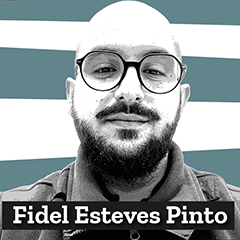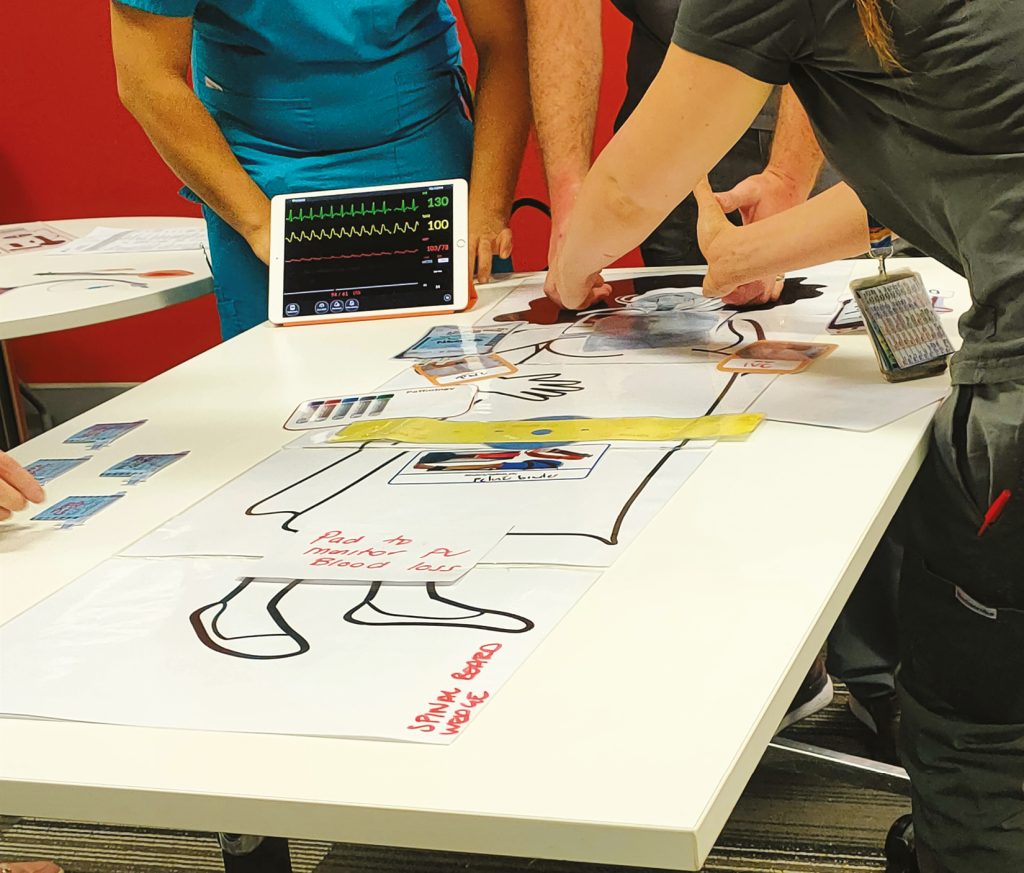The European H2020 MED1stMR project will revolutionise training for first responders in multi-casualty incidents. It uses mixed reality technology combining manikins, stress sensors and AI tools. Since July 2023, it is being tested in six European cities with more than 300 rescuers: read the article to learn more.
The results of the European H2020 MED1stMR project will transform training for first responders in multi-casualty incidents.
The innovative mixed reality technology combines manikin-simulated patients (which provide heart rate, consciousness and respiratory rate estimation on contact), stress measurement sensors and an AI-based scenario management tool to better prepare healthcare first responders for real-life situations in highly complex incidents.
Since July 2023, the developed technology and associated training programme is being tested with end-users across Europe. In total, more than 300 rescuers and emergency responders from all over Europe (60 of them Spanish) will train with the developed technology in week-long training sessions in 6 European cities (Vienna, Heildeberg, Östersund, Ransdt, Madrid and Thessalonika), and provide feedback and suggestions to the research and development team.

The challenge of Multi-casualty Incidents
Disasters involving a large number of casualties (from human or natural causes) are on the increase. In these situations, healthcare first responders need to triage victims, provide healthcare and coordinate the incident scene through complex organisational and communication tasks under extreme stress conditions. The MED1stMR training proposal prepares these first responders to deal effectively and efficiently with such events.
The technological journey
A multidisciplinary consortium of 18 partners from 9 European countries, coordinated by AIT- Austrian Institute of Technology, the Centre of Technological Experimentation, started in 2021 to create realistic mixed reality training solutions for healthcare first responders. “Product development across 9 countries and 18 partner organisations is challenging, but end users are continuously involved in the development by the consortium to identify all relevant needs. In this way, “science, technology and the point of view of healthcare first responders are combined from the very beginning” says Helmut Schrom-Feiertag, project coordinator at AIT Vienna.
After 2 years of requirements analysis with end users, technology development and preliminary scientific studies, the project is now ready for demonstration and evaluation in the field. The first training took place in Vienna in July 2023, organised by Johanniter Austria, who are contributing to the project mainly with their experience from the perspective of rescue and disaster relief services.
Dr. Carmen Cardós Alonso, who has participated in the MED1stMR project with her expertise as an emergency nurse as well as principal investigator of SUMMA 112 (Servicio de Urgencias Médicas de Madrid) in this project, says: “It is fantastic to have been involved in the development of MED1stMR from the beginning. We can use the training system to train large and complex emergency scenarios and thus prepare ourselves in the best possible way. The big advantages of mixed reality training for us are the possibility to repeat each training as often as we want and, of course, the post-training analysis capability for debriefing”.
Technological Expertise
Large-scale scenario simulation training (www.med1stmr.eu/field-trials) will provide feedback on the suitability of the mixed reality training solution. A team of experienced trainers from the project will train local trainers, according to the “Train the Trainer” principle, to pass on the knowledge and ensure the correct application of the training and coaching methods. Up to a total of 4 trainees per group will train two scenarios with different multi-casualty incidents each, using the state-of-the-art MED1stMR technology.
Purpose of the field tests:
– To evaluate the development of the technology under realistic conditions. (1 week of training with about 3-5 sessions per day, each session with 4 volunteers).
– To receive feedback from End-Users on the quality of the experience and approval of the technology for further development (all trainees are first responders in their countries).
– On-site research studies (stress, performance, cognitive state, team behaviour, fatigue, self-efficacy…).
– Raise awareness of the use of virtual training through a mixed reality environment to better prepare health first responders to intervene in disaster situations (involvement of policy and decision makers).
Learning effects
Virtual reality has proven to be suitable for training complex situations to enhance learning, but MED1stMR goes even further than just providing different environments and virtual patients. To increase the realism of the simulated virtual training, the solution includes high-end patient simulation medical manikins for an enhanced sensory experience and haptic feedback (such as feeling the patient’s pulse). This allows students to immerse themselves in the virtual scenarios and tactilely feel and visually perceive the body, limbs and movements while examining and treating patients.
According to Tatiana Vázquez, emergency nurse and researcher of the project, “the use of virtual and mixed reality in the field of Multi Casualty Incident training is very convenient when it comes to improving the training and preparation of end users. These tools allow us to improve our ability to act in this type of incident. The more training, the greater the capacity and the better the results”.
Arancha Fernández, emergency nurse and researcher, believes that “it is an exceptional opportunity to give realism to the practice of acting in this type of incident for all first responders”.
Soledad Herrador, another researcher, says “The possibility of simulating and practising in mixed reality scenarios increases the self-efficacy of health care responders, making them more effective in dealing with these stressful situations”.
My contribution is useful because I think it’s already great.
Stress measurements and resilience training
In addition to the above, during the training, bio-signals are measured from the trainees. This data is analysed and interpreted as individual stress levels and will be displayed along with numerous other information to the trainer/observer on a trainer-friendly dashboard. This dashboard provides the trainer with the virtual scenario flow, the trainees’ decisions and their performance data. Based on this data, the trainer can change the scenario during the course to provide better learning outcomes for the learner. In order to support learners and optimise results, the scenario can be automatically controlled using artificial intelligence (based on bio-signals and behavioural data).
This new generation of learning enables trainers to make evidence-based decisions and realistic learning experiences for healthcare first responders. The MED1stMR solution will increase confidence in actions, enable faster responses, and improve first responders’ coping strategies. Technical solutions that go beyond the current state of the art and are supported by scientific research will have a major impact on the effectiveness of future training.
Alberto Blanco (SUMMA 112), coordinator of the pilot in Spain (11-15 December 2023), who brings to the project his experience as an instructor in Multi Casualty Incidents, as well as his knowledge as a rescue and emergency doctor, says: “We see the MED1stMR project and mixed reality technology as an option to better prepare emergency healthcare workers. The collaboration with European emergency response organisations and scientific and technological partners are a very valuable aspect for us, which will help build a promising future.”
Project information:
EU Horizon 2020 Programa, Funding: 7.8 Mio, No.: 101021775, Duration: 36 meses. 29.4 Information on EU funding — Obligation and right to use the EU emblem
Press photos: https://www.med1stmr.eu/press-material/
Website: www.med1stmr.eu
Video: https://www.youtube.com/watch?v=TlC_E2jtTz8
LinkedIn: https://www.linkedin.com/company/med1stmr
Twitter: https://twitter.com/Med1stmr
Project partners: https://www.med1stmr.eu/consortium/
READ ALSO








































